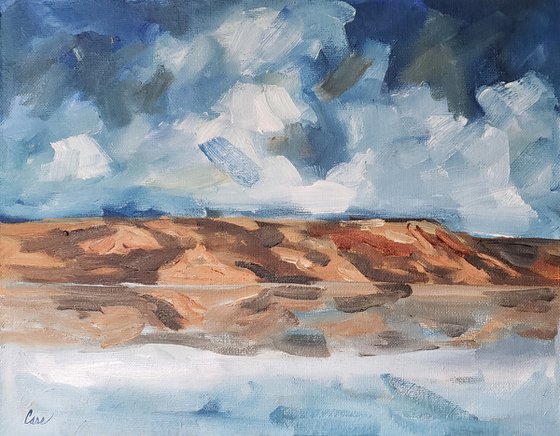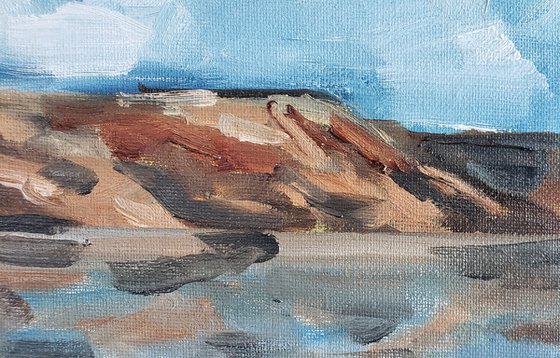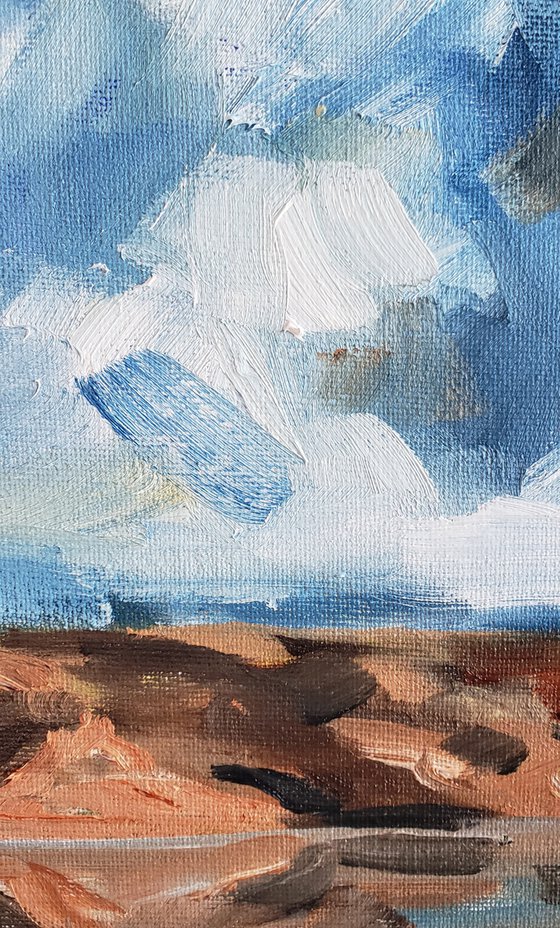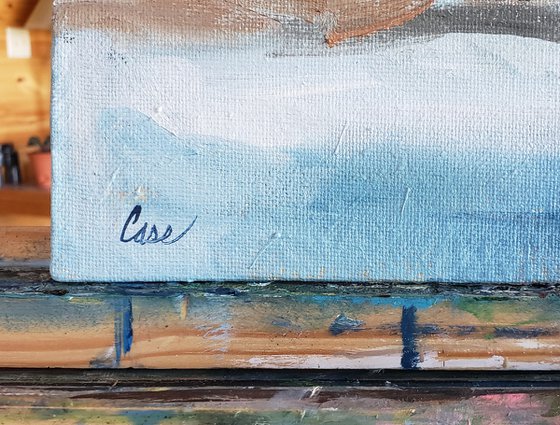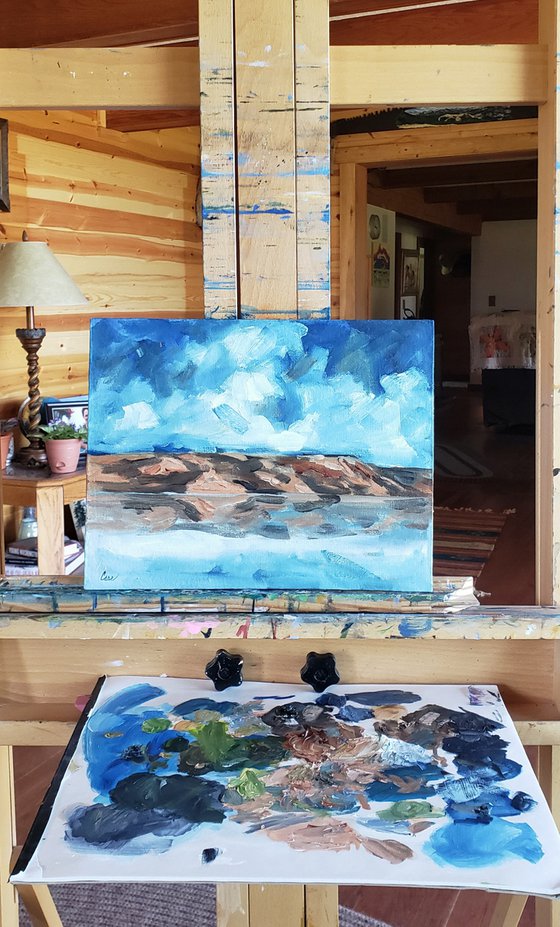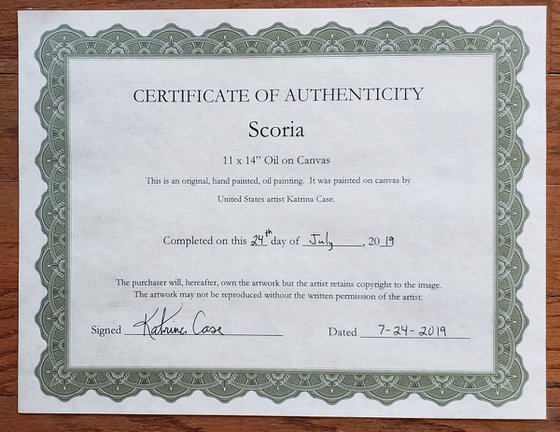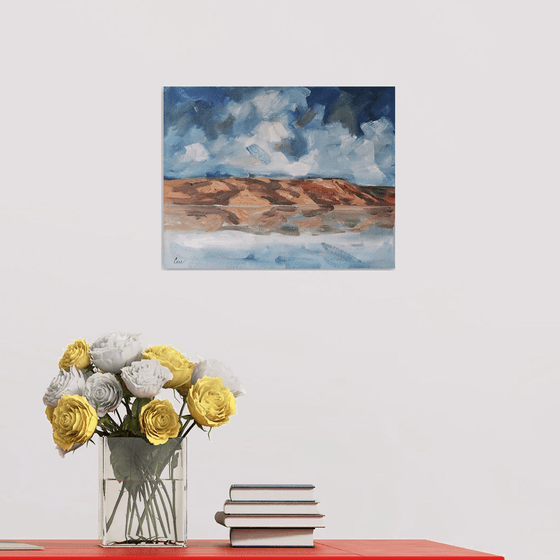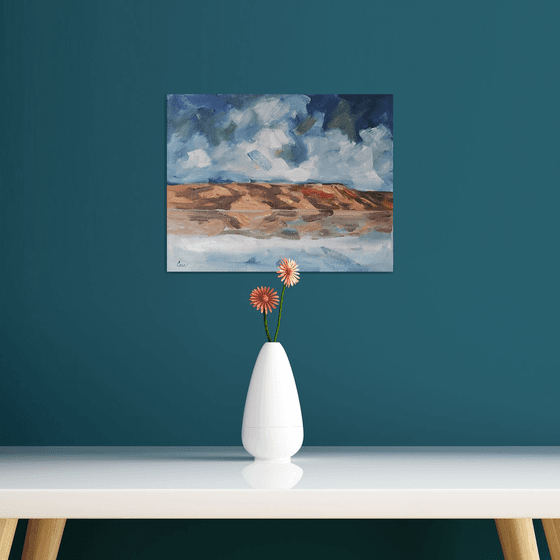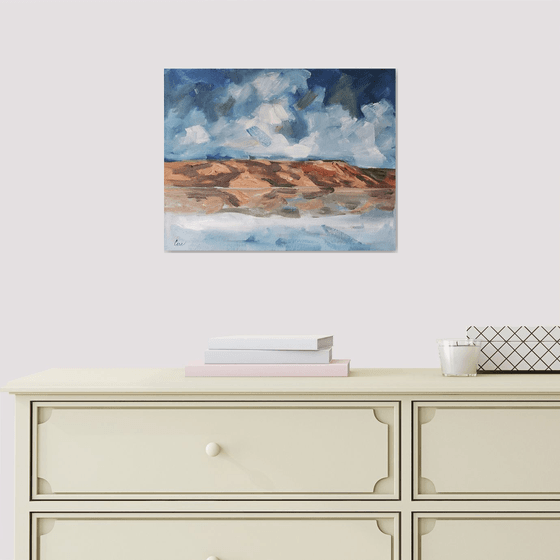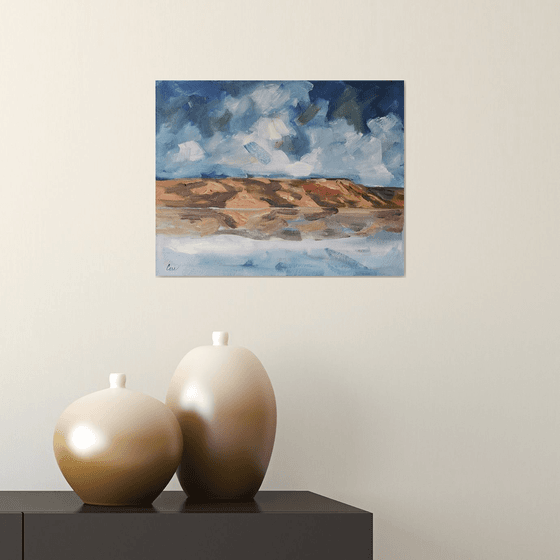Main Navigation
Original artwork description:
The first recorded reference to clinker that I know of was by William Clark, who made the following entry in his journal while wintering at Fort Mandan (March 21, 1805):
"Saw an emence quantity of Pumice Stone on the sides & feet of the hills and emence beds of Pumice Stone near the Tops of them, with evident marks of the hills having once been on fire. I Collecte Somne of the different sorts i.e. Stone Pumice & a hard earth, and put them into a funace, the hard earth melted and glazed the others two and the hard Clay became a pumice Stone glazed."
When Lewis and Clark arrived at Beulah Bay, about 20 miles west of present-day Riverdale, on April 10, 1805, Lewis noticed a seam of lignite burning along the face of an outcrop. He commented:
“the bluff is now on fire and throws out considerable quantities of smoke which has a strong sulphurious smell.”
On April 16, 1805, Meriwether Lewis wrote the following:
"I believe it to be the strata of coal seen in those hills which causes the fire and birnt appearances frequently met with in this quarter. where those birnt appearances are to be seen in the face of the river bluffs, the coal is seldom seen, and when you meet with it in the neaghbourhood of the stratas of birnt earth, the coal appears to be presisely at the same hight, and is nearly of the same thickness, togeter with the sand and a sulphurious substance which usually accompanys it."
Scoria is the beauty of the badlands of North Dakota.
Scoria is 11 x 14 inches on canvas board. It is signed on the front and signed/dated on the back. It comes with a certificate of authenticity.
Materials used:
Oils
Tags:
#landscape #red #expressive #blue #river #mountains #bold #blue sky #prairie #red rocks #badlands #north dakota #case art #katrina case #scoria"Scoria" - Landscape - Mountains - North Dakota (2019) Oil painting
by Katrina Case
54 Artist Reviews
£92.58 Sold
- Oil painting on Canvas
- One of a kind artwork
- Size: 35.56 x 27.94 x 0.76cm (unframed) / 35.56 x 27.94cm (actual image size)
- Signed on the front
- Style: Impressionistic
- Subject: Landscapes, sea and sky
Do you like this artwork?
This artwork has sold, but the artist is accepting commission requests. Commissioning an artwork is easy and you get a perfectly personalised piece.
Loading
Original artwork description
The first recorded reference to clinker that I know of was by William Clark, who made the following entry in his journal while wintering at Fort Mandan (March 21, 1805):
"Saw an emence quantity of Pumice Stone on the sides & feet of the hills and emence beds of Pumice Stone near the Tops of them, with evident marks of the hills having once been on fire. I Collecte Somne of the different sorts i.e. Stone Pumice & a hard earth, and put them into a funace, the hard earth melted and glazed the others two and the hard Clay became a pumice Stone glazed."
When Lewis and Clark arrived at Beulah Bay, about 20 miles west of present-day Riverdale, on April 10, 1805, Lewis noticed a seam of lignite burning along the face of an outcrop. He commented:
“the bluff is now on fire and throws out considerable quantities of smoke which has a strong sulphurious smell.”
On April 16, 1805, Meriwether Lewis wrote the following:
"I believe it to be the strata of coal seen in those hills which causes the fire and birnt appearances frequently met with in this quarter. where those birnt appearances are to be seen in the face of the river bluffs, the coal is seldom seen, and when you meet with it in the neaghbourhood of the stratas of birnt earth, the coal appears to be presisely at the same hight, and is nearly of the same thickness, togeter with the sand and a sulphurious substance which usually accompanys it."
Scoria is the beauty of the badlands of North Dakota.
Scoria is 11 x 14 inches on canvas board. It is signed on the front and signed/dated on the back. It comes with a certificate of authenticity.
Materials used:
Oils
Tags:
#landscape #red #expressive #blue #river #mountains #bold #blue sky #prairie #red rocks #badlands #north dakota #case art #katrina case #scoria14 day money back guaranteeLearn more
